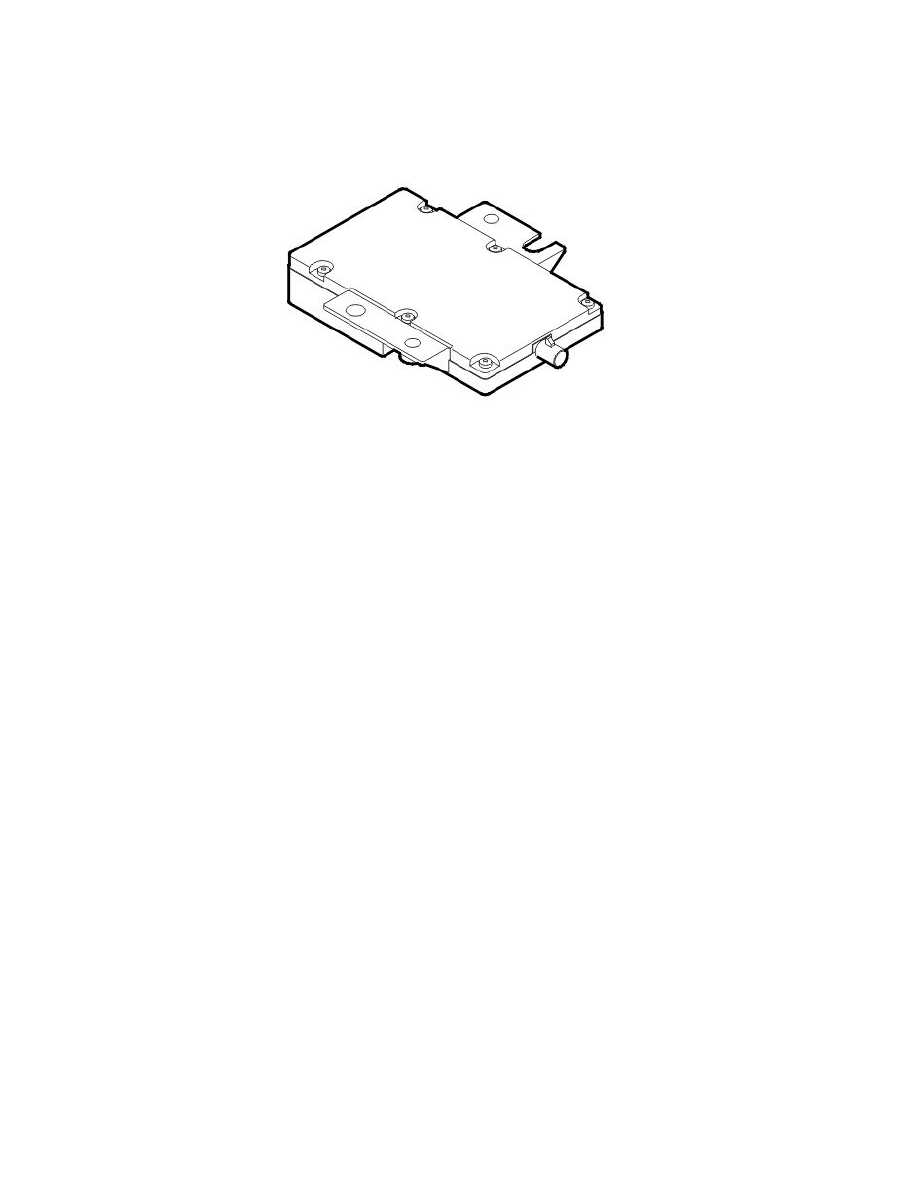V50 L5-2.4L VIN 39 B5244S7 (2005)

Global Positioning System Module: Description and Operation
Design
Design
Control module
The global positioning system module (GPS) has a built-in 12 channel GPS receiver. The receiver is optimized for a frequency of 1575.42 MHz.
The global positioning system module (GPS) transmits three signals:
-
A received signal from the GPS satellites. Used by the multimedia module (MMM)
-
A signal to the infotainment control module (ICM) indicating that the control module is awake.
-
A combination signal to the Phone module (PHM). Current, received position is transmitted when it is available, otherwise a calculated position is
transmitted, based on the last known received position.
The navigation section of the multimedia module (MMM) calculates the position of the car based on the signals it receives from the antenna and using an
integrated three dimensional piezo electrical gyro.
If there is no or poor communication with the GPS satellites, for example when in a tunnel, the global positioning system module (GPS) uses the
information from other control modules for dead reckoning (i.e. to calculate the position of the car).
The global positioning system module (GPS) requires the following to calculate the actual position:
-
the information from the wheel rotation counters stored in the brake control module (BCM)
-
information about back-up (reverse) gear from the transmission control module (TCM)
-
information about whether the parking brake is applied from the driver information module (DIM)
-
information about whether the brake pedal is pressed or not from the brake control module (BCM)
-
information about the extent to which the traction control system is activated from the brake control module (BCM)
-
information about wheel size from the central electronic module (CEM).
All information is transmitted via the infotainment control module (ICM).
The navigation system needs signals from at least three GPS satellites to calculates the position of the car in two planes. For three dimensional position
reckoning, signals are required from at least four satellites. The position is measured both vertically and horizontally. The antenna continuously transmits
information about the position of the car to the GPS receiver. The position is accurate to within a maximum of 25 meters from the position calculated by
both the GPS signal and dead reckoning. The accuracy is somewhat reduced when only dead reckoning is used.
The fault increases with distance driven since the position was lost.
If there is signal interference, when traveling in tunnels or high rise areas for example, the accuracy may be reduced slightly.
For the system to determine the position as exactly as possible, the system must differentiate between signals coming directly the GPS satellites or those
reflected by a high rise building for example.
When the ignition is switched off the power consumption of the GPS receiver must not exceed 0.1 mA. The receiver stores important information, such
as the last GPS signal received if the power is cut.
The system can endure temperatures between -40 °C and 85 °C.
The global positioning system module (GPS) checks the input and output signals through an integrated diagnostic system.
Note! If the diagnostic information indicates a lost GPS signal, the signal should be checked outdoors. This is because the signal may be blocked
if the vehicle is indoors.
Antenna
